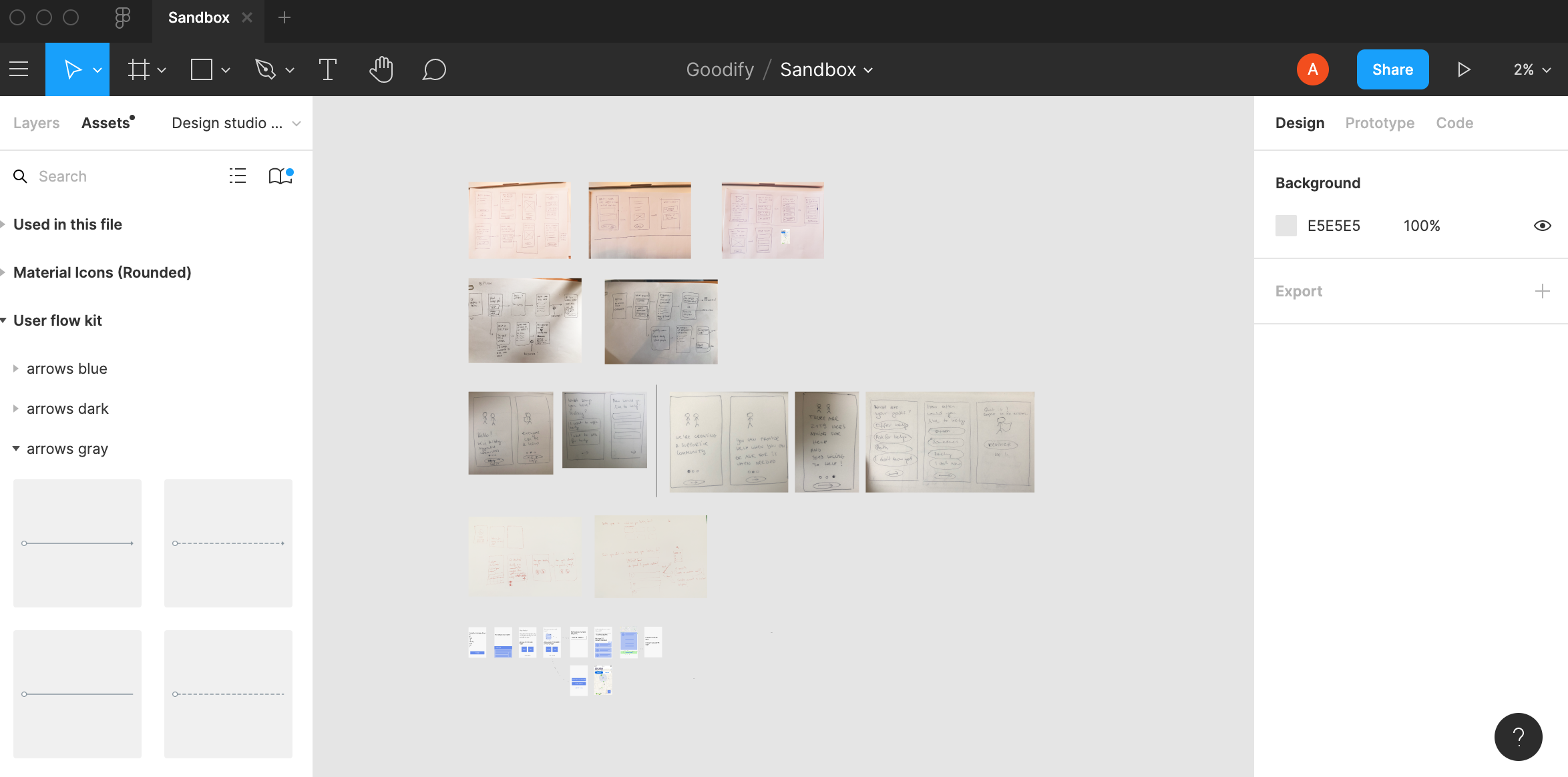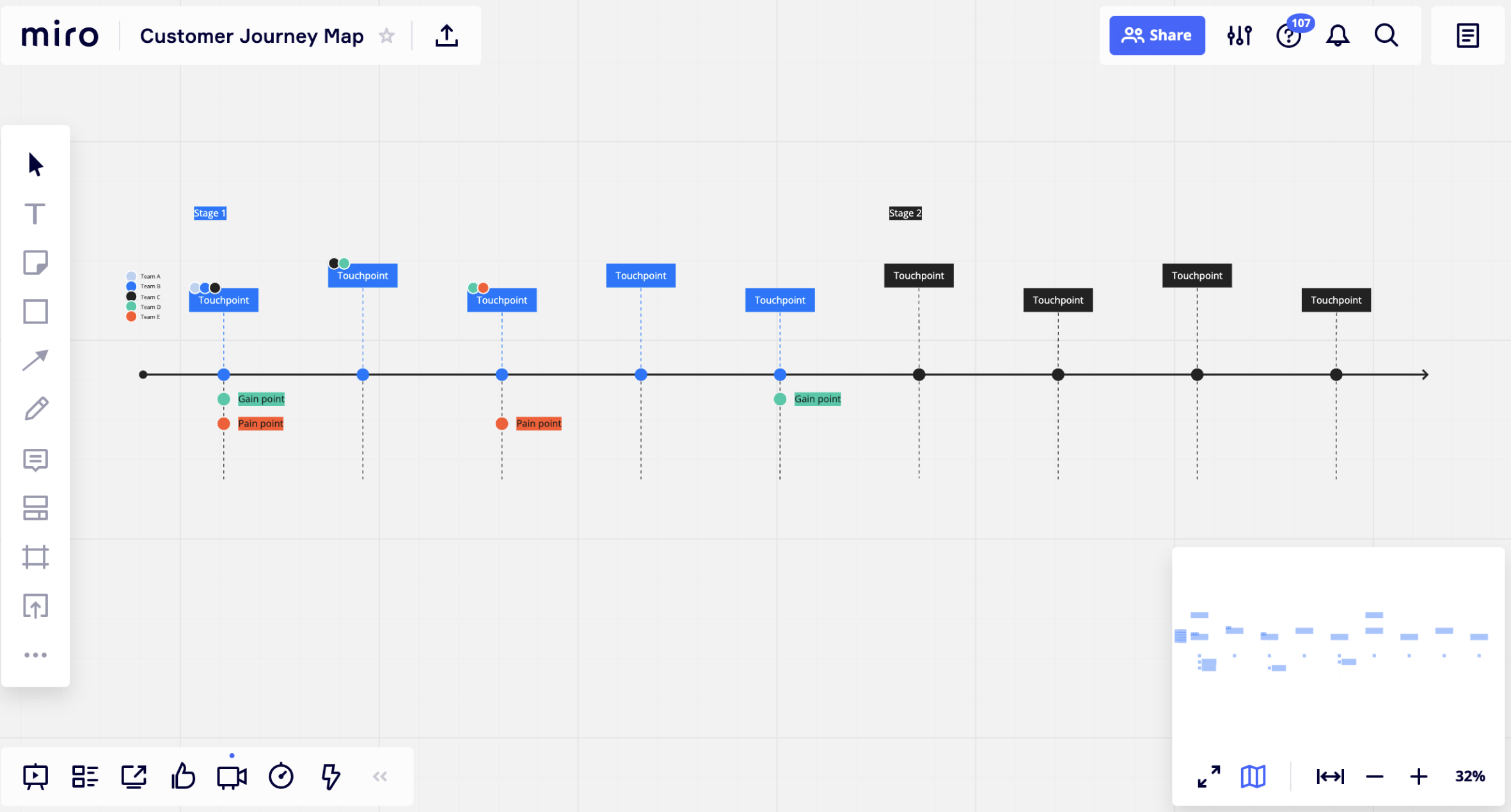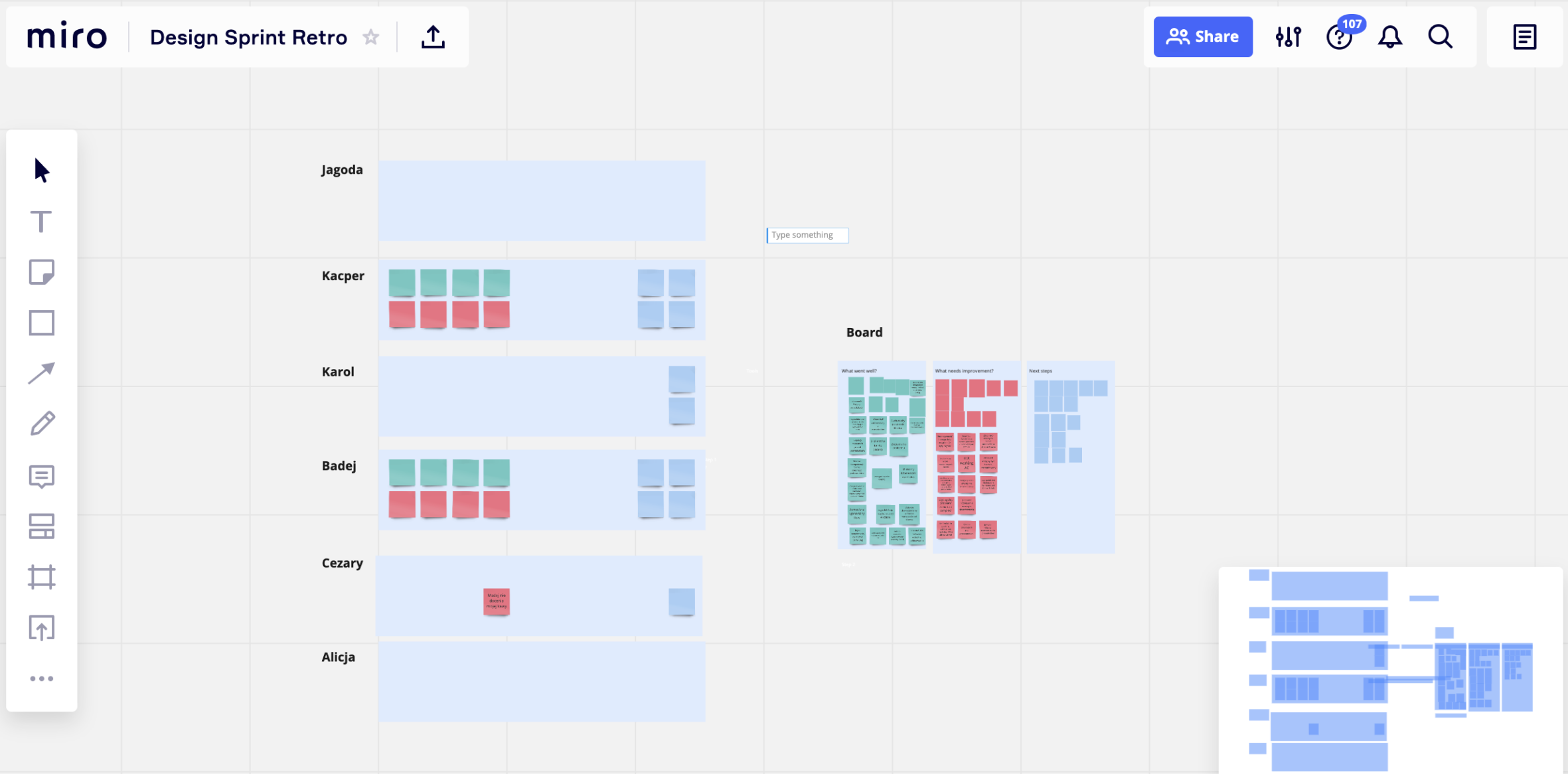In our current reality, all product design teams need to adjust their processes to a remote-only scenario.
Shifting interactive and hands-on product workshops, like Design Sprints, to a solely virtual setting may seem like a difficult mission to accomplish. That said, with a well-structured agenda and the right set of tools, remote workshops can be as successful as in-person ones.
Without further ado, Here are a few tips on how to plan and conduct remote workshops.
Modify the process
When running a remote workshop, don’t try to mirror the in-person experience. It’s hard to imagine people sitting 6 or 8 hours straight in front of their laptops — and it’s simply impossible.
That’s why it’s important to modify workshops in a way that is the most feasible. You can do it by:
breaking the workshop into shorter sessions,
stretching it out into a couple of days,
transforming some exercises into homework assignments or 1on1 calls.
One thing to keep in mind is that remote workshops are usually way more tiring than in-person ones, so don’t try to squeeze too many tasks into one session.
Remote code of conduct
Some of the rules that apply to the in-person workshops are still in force when working remotely, but you will need to adjust them and inform your team members accordingly. Make sure everyone knows what tools you are using, how to use them, what is the workflow, and how to ensure good audio and video quality.
Useful tools
There are plenty of tools that are helpful when it comes to remote workshops. Here are some of the ones that we use here at Intent.
Miro
Miro can be used for live collaboration while sketching, voting, gathering feedback, and basically everything that workshop participants need to perform. You can use predefined templates or create custom boards that match your needs.
Figma
You can use Figma for collaboration while working on sketches or wireframes. Users can create quick digital sketches, or upload photos of actual drawings and share ideas within the team
Zoom
Use Zoom for hosting the workshop or 1on1 calls. Make sure that participants have their cameras on during the workshop — it helps to stay engaged and enables participants to pick up on nonverbal aspects of communication as well.
Zoom can be also used for usability testing during Design Sprints, and (if you have your participants’ permission) you can record test sessions, which can be very helpful when analyzing the feedback.
Slack
You can use any communication tool that you’re already used to . For us, Slack is the way to go. Make sure to create a dedicated channel for the workshop to keep the communication in one place.
Preparation for the workshop
It’s important that, when the workshop kicks off, everyone knows how to use the tools, so make sure to provide guidance. If you’re using Miro, you can create a board with a step-by-step guide for participants, which they can use whenever they need it during the workshop.
You can also prepare a dedicated board where participants will add their notes or screenshots. If you ask the team to use specific shapes or colors for a certain action, i.e. blue post-it notes for feedback — put them in a visible place on a board, so they can easily copy-paste or drag them.
Sample techniques in the remote scenario
Let’s take a look at some techniques that are common for various workshop frameworks, and can be done entirely remotely.
1. Sketching
Sketching is a key part of any design workshop. While during the in-person workshop it is mostly done using pen and paper, collaboration tools offer the possibility to fully move this workshop to digitalize this method
You can use Figma, Miro, or similar tools with a live collaboration feature. What you should prepare in advance is a workspace for each participant, so they won’t disturb each other while you'll be able to easily review all ideas.
Tip: For workshop exercises when there’s more time needed to sketch the idea – like in the Solution sketch part in Design Sprints – it’s best to move the exercise to an offline setting and set a deadline for participants to send their ideas to the Facilitator, then conduct a review during the next workshop session.

Reviewing ideas as a part of Design Studio in Figma
2. Mapping
Whether it’s the customer journey, a map in Design Sprint, or user flow, online tools help us to build maps very easily. Miro and Mural are offering a range of pre-defined templates, created specifically for these research techniques.
Tip: Starting the Mapping exercise as part of the workshop from a blank slate might be a bit too difficult. To maintain participants' attention and engagement it is helpful to create a map or flow (or part of it) before the workshop, and go through it during the call with the team . Ask them if are there any steps missing, about what they would like to modify, or simply ask them to fill in the missing parts of the map.

Customer Journey Map Template in Miro
3. Brainstorming and affinity mapping
Generating ideas, forming HMW questions, or sharing feedback is normally performed using colorful sticky notes.
At Intent, we have been trying for a while now to move all those techniques to online tools and we have found the digital way not only to be less wasteful, but also better for us to organize, analyze, and archive collected insights.
If you need brainstorming workshop participants to work on a given task in smaller groups, it’s possible to do it using Zoom’s Breakout rooms feature, which lets the host split the meeting into multiple, smaller sessions.
Tip: Use pre-defined templates or create your own and provide participants ready-to-use workspaces with post-it notes to avoid wasting a lot of time searching and editing all moving objects.

Design Sprint Retrospective in Miro
Summary
Remote workshops require more effort and discipline from the whole team, but with good processes in place and choosing the right tools they can be just as successful as offline ones and foster your product development process.
If you would like to know more about remote workshop frameworks that could support your product development process, let us know!
Photo by Alvaro Reyes on Unsplash

Alicja Topor
UX Researcher

